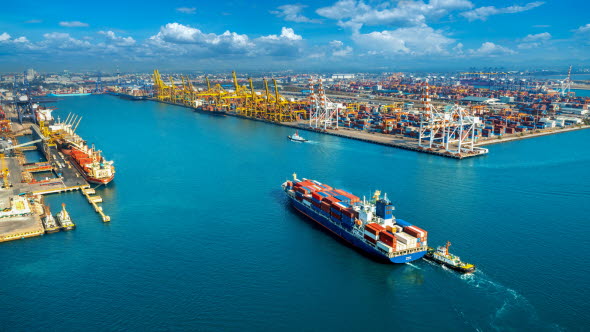Questions and answers



As part of our sustainability strategy and ambition to be a leading catalyst in the transition to a low-carbon society, SEB strives to reach a net-zero credit portfolio by 2050 at the latest.
In order to steer our business towards that goal, and to measure our progress along the way, we have developed two proprietary metrics – the Carbon Exposure Index and the Sustainability Activity Index.
Goal: To reduce fossil fuel exposure by
45-60% by 2030, compared
to a 2019 baseline.
Outcome 2024: -53%
Ambition: To increase average
activity 6x-8x by 2030,
compared to a 2021 baseline.
Outcome 2024: +175%
Ambition: To align the credit
portfolio with pathways
to net-zero by 2050.
Outcome 2023: -48% reduced financed emissions
The Carbon Exposure Index is a volume-based metric capturing our fossil fuel credit exposure. Our goal is to reduce the fossil credit exposure in SEB's energy portfolio, which includes power generation and transmission as well as oil and gas (upstream-related and refining & distribution), by 45–60 per cent by 2030 compared with a 2019 baseline. At year-end 2024, SEB’s fossil fuel credit exposure had declined by 53 per cent since the end of 2019. As a share of the total credit portfolio, it now accounts for 1.9 per cent, down from 4.8 per cent at the end of 2019. Reaching this goal means that we will be in line with, or outperform, the strictest 1.5°C scenario assumptions provided by the International Energy Agency and Network of Central Banks and Supervisors for Greening the Financial System (NGFS).
The Carbon Exposure Index methodology was modified during 2023. The reporting currency was changed from SEK to EUR to better capture the currency mix of the credit exposure. In addition, the power transmission sector was excluded from the scope to reflect the limited ability of grid owners to directly influence the fossil content in national electricity mixes. All historic numbers have been restated for the changes in the methodology.
In addition, the Carbon Exposure index corridor was adjusted. The upper limit of the corridor in 2025 has been lowered to the average of the IEA and NGFS benchmark scenarios and the benchmark scenarios have been updated with the latest 1.5C aligned assumptions.
The Sustainability Activity Index is a volume-based metric capturing our sustainability activity, across four areas – sustainability-related financing, sustainable finance advisory, greentech venture capital investments and sustainable savings and investments as share of SEB's total fund offering, own and external. The ambition is to increase activity 6–8 times by 2030 compared with a 2021 baseline. At year-end 2024, it had increased by 175 per cent compared with the end of 2021.
Volume, indexed – measuring the development of sustainability labelled loan products (such as green loans, leasing and mortgages. We aim for an increase of ten times by 2030.
Outcome 2024: increased by 186 per cent compared to 2021, to SEK 323 billion.
Volume, indexed – measuring the result of advising our customers on the capital market on sustainable finance, volumes related to for example green bonds and sustainability-linked bonds. We aim for an increase of three times by 2030.
Outcome 2024: increased by 77 per cent compared to 2021, to SEK 118 billion.
Volume, indexed – measuring investments supporting entrepreneurs and new companies within the greentech and cleantech area. We aim for an increase of six times by 2030.
Outcome 2024: SEB Greentech VC increased its investments by 373 per cent compared to 2021, to SEK 324 million.
Share of AUM – funds that have sustainable investments as its objective, share of asset under management, SEB’s fund offering, own and external. We aim for an increase of eight times by 2030.
Outcome 2024: increased by 65 per cent, compared to the baseline in 2021.
In 2022, SEB set net-zero aligned 2030 interim targets for five sectors in its credit portfolio in line with its sustainability strategy. As of April 2024, the targets now cover SEB’s lending commitments to seven sectors – oil & gas, power generation, steel, car manufacturing, Swedish household mortgage, heavy vehicle manufacturing and shipping. These sectors accounted for 77 per cent of SEB’s financed emissions in 2023. Below is a description of all the seven sector targets.
The target 1), set in 2022, is to reduce absolute financed emissions to 5.6 million tonnes CO2e by 2030, a 70 per cent reduction compared with a 2020 baseline. As per year-end 2023, the absolute financed emissions were 6.6 million tonnes CO2e, a reduction of 64 per cent.
1) In 2023, SEB revised its target for the oil & gas sector and we now strive for a reduction of in absolute financed emissions of 70 per cent by 2030, compared with 55 per cent previously.
The target, set in 2022, is to reduce the financed emission intensity to 70 g CO2e/kWh by 2030, a reduction of 44 per cent, compared with a 2020 baseline. As per year-end 2023, the financed emission intensity was 82 g CO2e/kWh, a reduction of 35 per cent.
The target, set in 2022, is to reduce the financed emission intensity to 0.98 tonne CO2e/tonne steel by 2030, a reduction of 29 per cent, compared with a 2020 baseline. As per year-end 2023, the financed emission intensity was 1.43 tonne CO2e/tonne steel, an increase of 3 per cent.
The target, set in 2022, is to reduce the financed emission intensity to 61 g CO2e/km/vehicle by 2030, a reduction of 62 per cent, compared with a 2020 baseline. As per year-end 2023, the financed emission intensity was 134 g CO2e/km/vehicle, a reduction of 16 per cent.
The target, set in 2022, is to reduce the financed emission intensity to 2.18 kg CO2e/m2 by 2030, a reduction of 30 per cent, compared with a 2020 baseline. As per year-end 2023, the financed emission intensity was 3.80 kg CO2e/m, an increase of 6 per cent.
This target, set in 2023, aims to increase the share of Zero Emission Vehicles in new sales from 0.5 per cent in 2022 to 35 per cent by 2030 compared to the base year 2022. This is in line with the assumptions of the International Energy Agency’s updated Net Zero Roadmap – A Global Pathway to Keep the 1.5C Goal in Reach.
As per year-end 2023, the share of Zero Emission Vehicles in new sales increased by 4 percentage points.
This target, set in 2024, aims to reduce the average emission intensity by 41 per cent by 2030 compared to the base year 2022. The target covers all lending where ships are used as collateral for the lending, which makes it possible to follow the emission development at the ship level. The financed vessels and the credit exposure covered are the same as those covered by reporting under the Poseidon Principles, the global framework for responsible shipping that SEB signed in 2020.
As per year-end 2023, the average emission intensity reduced by 12 per cent.
Key facts about the shipping 2030 target
| Sector | Metric | Financed emissions target Δ 20201) – 2030 |
Δ 2020 - 2023 | |
|---|---|---|---|---|
| Oil and Gas E&P2) and refining | mt CO2e3) | -56% → -70% | -64% | |
| Power generation | g CO2e/kWh | -44% | -35% | |
| Steel | t CO2e/t steel | -29% | +3% | |
| Car manufacturing | g CO2e/km | -62% | -16% | |
| Swedish household mortgages | kg CO2e/m2 | -30% | +6% | |
| Heavy vehicle manufacturing | % of ZEV4)in new sales | 35%1 | +0,4 p.p.6) | |
| Shipping | g CO2e/t.mn5) | -41% | -12% | |
|
1) Baseline for Heavy vehicle manufacturing and Shipping is per 2022 SEB’s Methodology Document describes the methodology we apply for setting net-zero aligned 2030 sector targets for our credit portfolio, in line with our sustainability strategy. |
||||

The emission intensity in the bank’s shipping portfolio must be reduced by 41 per cent by 2030.

SEB's sustainability experts have extensive knowledge in areas such as climate and financing solutions, sustainable investments and regulatory development in the European Union.